 | ||
Similar Viili, Västerbotten cheese, Graham flour, Golden syrup, Lingonberry jam | ||
Consistency of filmj lk
Filmjölk ([²fiːlˌmjœlk]), also known as fil, is a traditional fermented milk product from Sweden, and a common dairy product within the Nordic countries. It is made by fermenting cow's milk with a variety of bacteria from the species Lactococcus lactis and Leuconostoc mesenteroides. The bacteria metabolize lactose, the sugar naturally found in milk, into lactic acid which means people who are lactose intolerant can tolerate it better than other dairy products. The acid gives filmjölk a sour taste and causes proteins in the milk, mainly casein, to coagulate, thus thickening the final product. The bacteria also produce a limited amount of diacetyl, a compound with a buttery flavor, which gives filmjölk its characteristic taste.
Contents
- Consistency of filmj lk
- G r egen filmj lk
- Overview
- In English
- In Finland Swedish
- Types of filmjlk in Sweden
- Homemade filmjlk
- References
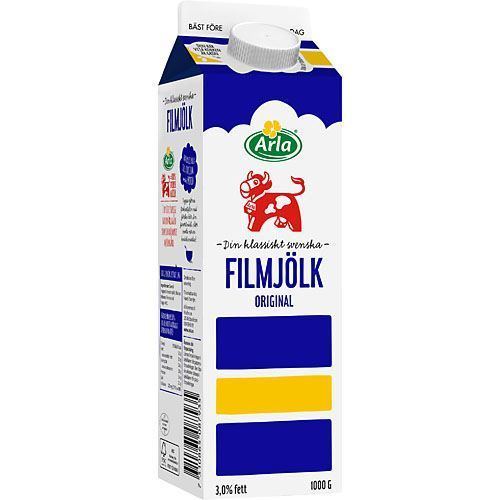
Filmjölk is similar to cultured buttermilk or kefir in consistency and has a mild and slightly acidic taste. It has a shelf-life of around 10–14 days at refrigeration temperature.

G r egen filmj lk
Overview
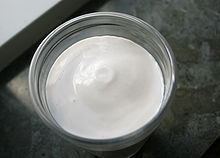
In the Nordic countries, filmjölk is often eaten with breakfast cereal, muesli or crushed crisp bread on top. Some people add sugar, jam, apple sauce, cinnamon, ginger, fruits, and/or berries for extra taste. In Norwegian it is called surmelk (Nynorsk: surmjølk) (sourmilk) but the official name is kulturmelk (Nynorsk: kulturmjølk). The drink is also popular in Latvian kitchens, where it is called rūgušpiens, rūgtpiens (fermented milk or sourmilk) and can be bought ready from stores but is more commonly made at home, additionally it can also be purchased and is popular in the neighboring country, Lithuania, where it is called rūgpienis or raugintas pienas (sour/fermented milk), due to its popularity it can be bought in majority of the stores alongside kefir.
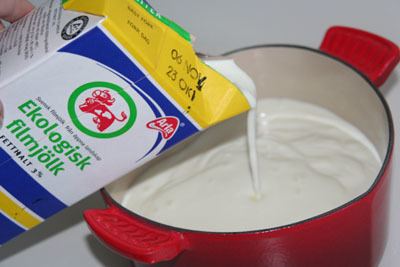
Manufactured filmjölk is made from pasteurised, homogenised, and standardised cow's milk. Although homemade filmjölk has been around for a long time (written records from the 18th century speak of filmjölk-like products, but it has probably been around since the Viking Age or longer), it was first introduced to the Swedish market as a consumer product in 1931 by the Swedish dairy cooperative Arla. The first filmjölk was unflavoured and contained 3% milkfat. Since the 1960s, different varieties of unflavoured filmjölk have been marketed in Swedish grocery stores. Långfil, a more elastic variant of filmjölk was introduced in 1965; lättfil, filmjölk with 0.5% milkfat was introduced in 1967; and mellanfil, filmjölk with 1.5% milkfat was introduced in 1990. In 1997, Arla introduced its first flavoured filmjölk: strawberry flavoured filmjölk. The flavoured filmjölk was so popular that different flavours soon followed. By 2001, almost one third of the filmjölk sold in Sweden was flavoured filmjölk. Since 2007, variations of filmjölk include filmjölk with various fat content, filmjölk flavoured with fruit, vanilla, or honey, as well as filmjölk with probiotic bacteria that is claimed to be extra healthful, such as Onaka fil which contains Bifidobacterium lactis (a strain of bacteria popular in Japan) and Verum Hälsofil which contains Lactococcus lactis L1A in quantities of at least 10 billion live bacteria per deciliter.
In English
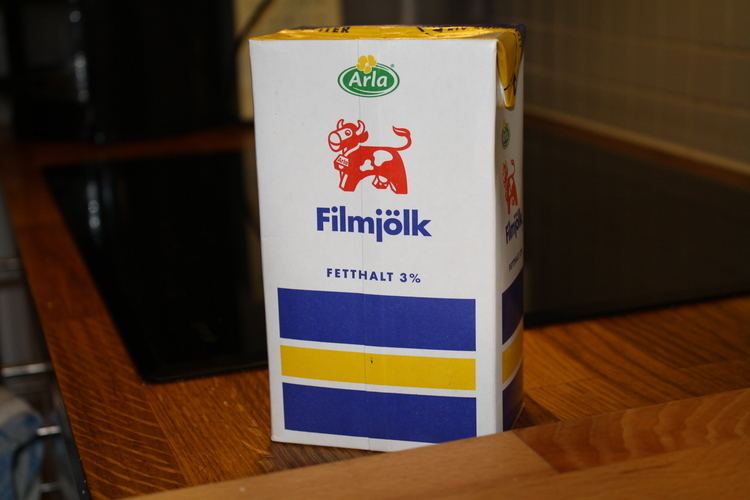
There is no single accepted English term for fil or filmjölk. In the United States it is referred to as 'long milk'. Fil and/or filmjölk has been translated to English as sour milk, soured milk, acidulated milk, fermented milk, and curdled milk, all of which are nearly synonymous and describe filmjölk but do not differentiate filmjölk from other types of soured/fermented milk. Filmjölk has also been described as viscous fermented milk and viscous mesophilic fermented milk,. Furthermore, articles written in English can be found that use the Swedish term filmjölk, as well as the Anglicised spellings filmjolk, fil mjölk, and fil mjolk.
In baking, when filmjölk is called for, cultured buttermilk can be substituted.
In Finland Swedish
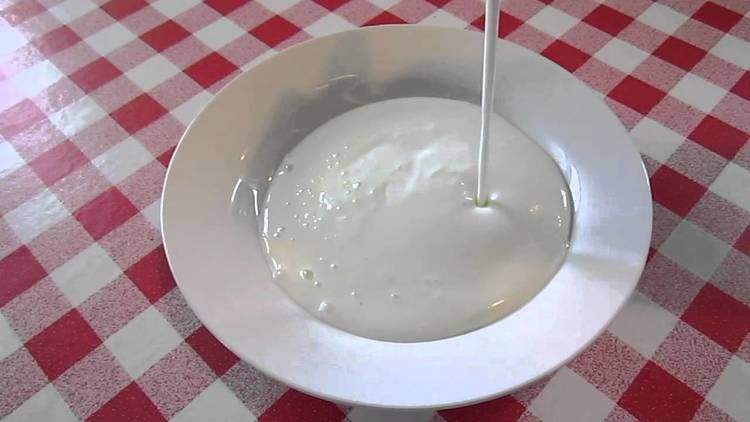
In Finland Swedish, the dialects of Swedish spoken by Swedish-speaking Finns, fil in Finland is the equivalent of filbunke in Sweden. Not all variants of filmjölk are found in Finland, normally only filbunke and långfil. Swedish-speaking Finns usually use the word surmjölk, which is the older name for filmjölk (also in Sweden) or piimä (in Finnish), which is a fermented milk product that is thinner than filmjölk and resembles cultured buttermilk.
Types of filmjölk in Sweden
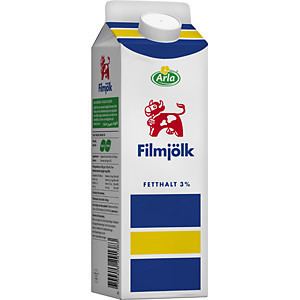
In Sweden, there are five Swedish dairy cooperatives that produce filmjölk: Arla Foods, Falköpings Mejeri, Gefleortens Mejeri, Norrmejerier, and Skånemejerier. In addition, Wapnö AB, a Swedish dairy company, and Valio, a Finnish dairy company, also sell a limited variety of filmjölk in Sweden. Prior to the manufacture of filmjölk, many families made filmjölk at home.
Fil culture is a variety of bacterium from the species Lactococcus lactis and Leuconostoc mesenteroides, e.g., Arla's fil culture contains Lactococcus lactis subsp. lactis, Lactococcus lactis subsp. cremoris, Lactococcus lactis biovar. diacetylactis, and Leuconostoc mesenteroides subsp. cremoris.
Homemade filmjölk
To make filmjölk, a small amount of bacteria from an active batch of filmjölk is normally transferred to pasteurised milk and then left one to two days to ferment at room temperature or in a cool cellar. The fil culture is needed when using pasteurised milk because the bacteria occurring naturally in milk are killed during the pasteurization process.
A variant of filmjölk called tätmjölk, filtäte, täte or långmjölk is made by rubbing the inside of a container with leaves of certain plants: sundew (Drosera, Swedish: sileshår) or butterwort (Pinguicula, Swedish: tätört). Lukewarm milk is added to the container and left to ferment for one to two days. More tätmjölk can then be made by adding completed tätmjölk to milk. In Flora Lapponica (1737), Carl von Linné described a recipe for tätmjölk and wrote that any species of butterwort could be used to make tätmjölk.
Sundew and butterwort are carnivorous plants that have enzymes that degrade proteins, which make the milk thick. How butterwort influences the production of tätmjölk is not completely understood – lactic acid bacteria have not been isolated during analyses of butterwort.
